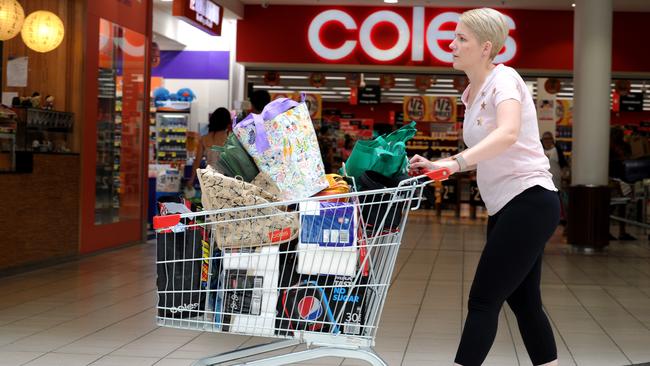Supermarket suppliers face a profit pinch as competition heats up and prices fall, says Jarden
The nation’s food and grocery suppliers are increasingly pessimistic about their ability to recover rising input costs from supermarkets in the form of higher prices.

The nation’s food and grocery suppliers are increasingly pessimistic about their ability to recover rising input costs from supermarkets in the form of higher prices, as the pressure from politicians, public inquiries and deflation sees a fall in shelf prices and more promotions to crunch supplier profit margins.
Inquiries into the supermarkets, such as the Greens-led Senate inquiry, have attracted negative press to both leading chains, especially Woolworths, and helped feed into a need to cut prices at the checkout.
The latest survey of fast-moving consumer goods suppliers by Jarden, which interviewed 55 leading supermarket suppliers, has painted a pessimistic picture reflecting benign volumes, rising costs and regulatory pressure – with lower shelf prices often coming at the expense of suppliers.
This regulatory pressure is now driving supermarket behaviour to some extent, as the leading chains Woolworths and Coles cut prices – through promotions and discounts – in a strategy to improve competitiveness but also a “political” strategy to meet growing community anger.
“We’ve had the inquiries going on and there’s been a lot more pressure politically and publicly around food prices,” Jarden analyst and survey report author Ben Gilbert said on Wednesday.
“While food price inflation was going to moderate, based on offshore markets such as the UK and US, I suspect it happened a little bit more quickly, a function of the inquiries and increasing competitive backdrop.
“So you’ve seen some deeper discounts coming through, you’ve seen some increases in frequency and I think just generally the competitive backdrop business has ticked up a level. As a consequence of the inquiries, there’s more pressure to cut prices and the pressure to do more promotions on the back of them.
“I think it’s both competitive and a political move,” Mr Gilbert said.
In this environment it has been harder for food and grocery suppliers to recover costs.
“If you look over the past 12 months, it would suggest that they (suppliers) have been able to recover costs prices through price increases. But if you look at what they’re thinking about the next six to 12 months they are finding it harder to take price, but at the same time you are seeing ongoing cost pressures coming through.
“As it’s harder to take price, cost of goods has become a much bigger issue, around 30 per cent of them saying it’s their biggest single issue over the next 12 months,” Mr Gilbert said.
The survey showed that in January only 20 per cent of suppliers surveyed said cost of goods sold was the biggest challenge facing their business, but now that was a dominant challenge compared to other business challenges such as supply chain, terms with retailers, frugal shoppers and wage pressures.
“Suppliers’ share of profit is falling. Suppliers continue to see margin contraction, with costs (cost of doing business and cost of goods sold) up around 4.7 per cent versus planned price increases of around 1 per cent over the next six months with more of the profit pool shifting to the likes of Coles, Woolworths, Aldi and Metcash.”
And if supermarket prices aren’t keeping pace with supplier costs, someone is going to feel their margins squeezed.
The Jarden supplier survey found that the current pace of prices is much lower than in January 2024, with 10 per cent of suppliers surveyed planning cuts. Only 26 per cent of respondents are planning to increase prices in 2024, with an average 1 per cent rise expected. This compares with 79 per cent that took price in 2023.
“In short, the market has become more challenging for suppliers since January, with a combination of rising costs, inability to take price and changing retailer behaviours (regulatory led) creating a more challenging backdrop. The risk of margin declines for suppliers is higher, with Woolworths the biggest deteriorator in terms of performance, albeit there are some signs this could be temporary,” Mr Gilbert said.
It has also become more competitive among retailers, especially as new entrants emerge.
“I think the markets have become more competitive, just generally over the last six to 12 months. There are new entrants into the space such as Bunnings into pet and cleaning and Amazon expanding range, so it’s definitely shaking up the market a little bit,” he said.
“Chemist Warehouse has continued to grow, Reject Shop has continued to grow and I think we’ve also seen a bit more of a competitive response to Aldi.”




To join the conversation, please log in. Don't have an account? Register
Join the conversation, you are commenting as Logout